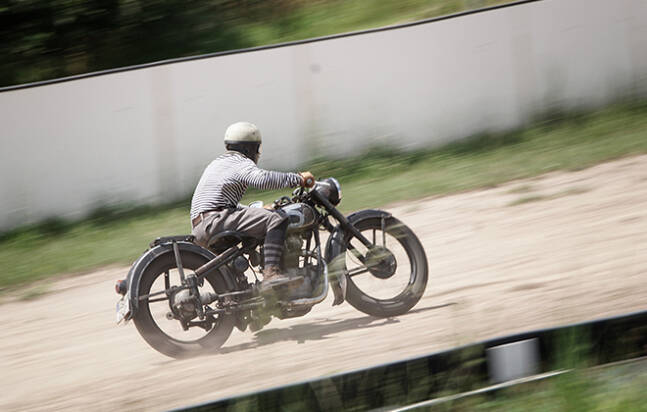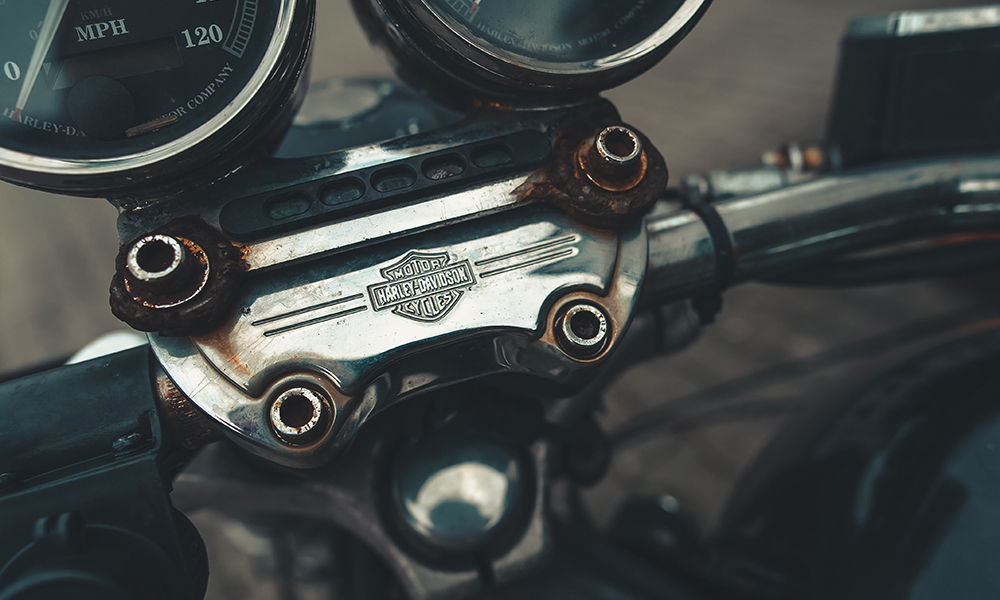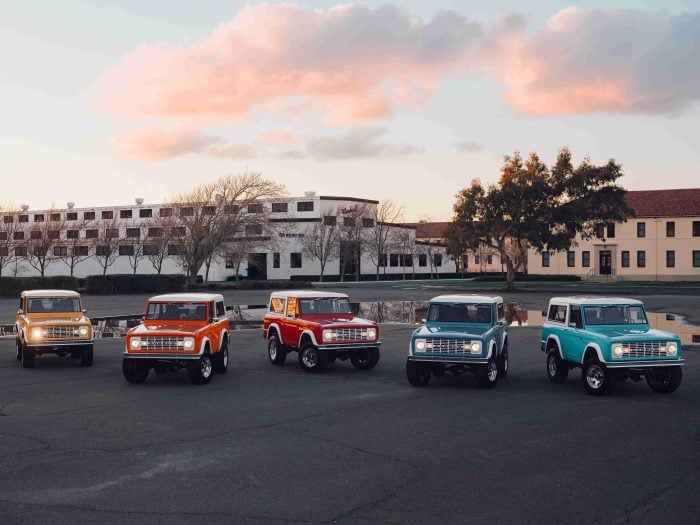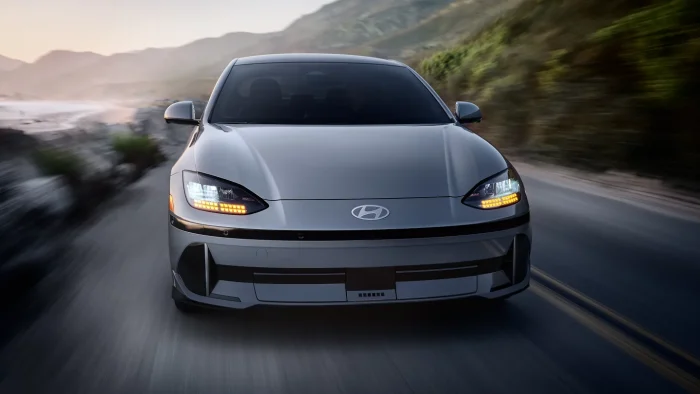So you want to buy a vintage motorcycle. Congrats! Welcome to the club. I’ve owned quite a few old bikes in my day, but I’ll never forget my first.
I was 18 years old. Fresh out of high school with an attitude untamable by things like taxes, the law, or even my parents—-even though I still lived in their home. It was a warm spring day and I’d saved a cool $1,000 to spend on a motorcycle.
My parents had forbade me from riding since I was a kid (due largely in part to my Uncle Kevin nearly losing his foot after being T-boned on an old Honda CB350 in the ‘80s), and I was finally old enough to tell them they were powerless to stop me from attaining Easy Rider Nirvana and staying there forever.
I looked for weeks for the right bike that fit my budget and eventually settled on a 1982 Yamaha XJ1100. It was ugly as sin, but it was four cylinders and 1,100CCs of pure Japanese Dual Overhead Cam’ed power snugged tight between my legs. The fact that it was also only $800 helped, too.
From the time I paid the guy I bought it from to the time I’d wrecked it going 60-something in a parking lot was probably less than two weeks total.
The important lesson there, of course, was that in many things in life, you can bite off more than you can chew and still come away whole. But motorcycles mustn’t ever be one of those things. Biting off more than you can chew on a bike can, and far too often does, end in disaster.
The other lesson was that people can buy, wreck, and rebuild old stuff and still not lose money on it–sometimes. I spent a few weeks ordering cheap, easy-to-find parts for the ol’ XJ1100 on eBay and Craigslist, put the mangled menace back together, and promptly sold it to a school teacher in Connecticut for a whopping $1,000 profit.
I went right out and bought a significantly lighter and nimble 1978 Yamaha XS650, which would eventually become my first chopper.
Since then, I’ve owned and built many used motorcycles from all over the place: The internet, swap meets, word-of-mouth deals–everywhere.
Here’s everything you need to know before buying a vintage motorcycle.
Why Should You Buy a Vintage Motorcycle?
There are a ton of reasons why you should consider buying vintage over new. Bikes depreciate a lot in value the second they leave the dealership lot. And if you want a certain style of bike, you may not be able to find it at a dealership. If you’re a new rider, you should buy something you won’t mind dropping or sliding on. Old stuff is cool. Old bikes have more soul.
The list goes on and on if you’re open enough to the idea of it.
Are old bikes antiquated? Sure. But parts are also probably cheaper for a vintage bike, depending on what vintage bike it is, and we tend to give ourselves more “permission” to really screw something up and learn from that mistake than we ever would on a new bike.
And if you want to take another direction with it, depending on the type of old bike you’re after, it may actually appreciate over time. We’re not talking about 1982 Yamaha XJ1100s, of course (I might be the only person in the history of the Yamaha XJ1100 who actually made money on the re-sale of one), but look at vintage Harley stuff, for example.
I remember when you could buy a complete running Panhead for between $5,000 and $6,000, and even at that price, you’d have buddies busting your chops about overpaying. Ten years later and you can’t even touch a numbers-matching Panhead motor for that price. To collectors, this stuff is artwork. And once it’s all gone, it’s all gone.

How Much Does a Vintage Motorcycle Cost?
I won’t even begin to tell you how much you should spend on a vintage motorcycle because it can all vary wildly. You can grab yourself an $800 Yamaha XJ1100 or spend north of $25,000 on just a Harley-Davidson Knucklehead motor. You can get lucky and score an old Triumph Bonneville for $1,500 when riding season is over or get stuck paying $7,000 for a base-model Harley Sportster in late June.
Instead, what I’ll say is this: Don’t bother questioning the market or prices. When it comes to things like old bikes or old automobiles (or old anything, really), something is worth whatever someone is willing to pay for it.
And as with most things in life, so is true for vintage motorcycles: you get what you pay for.
That means before you look for something to buy, make sure you’re managing your expectations (and financial commitment) accordingly. If someone’s offering a Ducati Streetfighter on Facebook Marketplace for $1,500, it’s probably too good to be true.
But if someone’s offering a Honda Shadow for $1,500 on Facebook Marketplace, you could probably talk them down to taking $1,200 and being happy about it.
Do your research, see what the bike you want is going for, be prepared to travel to get it, and then save accordingly.
Where Should I Buy My Vintage Motorcycle?
You can pretty much like whatever you want and there’ll be a community for it somewhere on the ol’ World Wide Web. When it comes to where you can go to find your dream bike, the answer is: anywhere you want.
I can’t go a single day without someone texting or DMing me a screenshot from a Facebook Marketplace ad for something they remember me talking about needing months ago. Everything winds up there at some point. You can also search for specific Facebook groups and pages that cater to the type of bike you want, and I’ve had a lot of success over the years finding cheap stuff on these.
You can also check out specific Instagram accounts tailored to whatever bike you’re looking for. There’s most likely an entire “buy, sell, trade” account for whatever type of bike you could ever want. The benefit of accounts like these is that they put a lot of eyes on a lot of niche pieces that might be difficult to find elsewhere. You can also make “ISO” (In Search Of) posts for the specific kind of bike you’re looking for.
Of course, all those eyes can be a double-edged sword. If you want something they’re posting, then the chances are high that someone else does, too. Which means you may find what you need quickly, but you’ll probably be paying at or above market rate for it.
Craigslist and hyper-specific websites and community forums are still around, too. In my experience, the people on these forums and pages are usually a little more detached from the market and care more about keeping people on the road and giving the community what it wants and less about turning a quick profit.
You can also do things the old-fashioned way. Things like swap meets, having friends get the word out, reaching out to people you know (and maybe don’t know) are all excellent ways to source the kind of bike you’re looking for.
Plus, there’s something to be said about doing old school things old school ways. Meeting up, shaking hands, exchanging cash for titles and keys–it’s important. And, at the very least, it’s much easier to work out a better deal with someone when everyone is face-to-face than it is to message someone a lowball offer on a bike they’re getting dozens of Facebook messages about.

What Should I Look for Before I Buy a Vintage Motorcycle?
This is probably the trickiest part of buying a vintage motorcycle, but it’s very important to do the best you can to protect your investment before dropping a dime on it. Every guide you’ll read on the internet about this kind of stuff will tell you basic, silly stuff that doesn’t really matter (I just read one where the guy told folks to take the carburetor off and inspect the rubber O-ring seals before exchanging any money with the seller, which is a great way to get yourself kicked out of someone’s garage).
The following check list is what I’ve used in my years of wheeling and dealing old, used bikes with the best of ‘em.
Check the vin number. A proper vin check will tell you some very valuable information about a bike. The two most important things are:
1. Whether the bike has a clear title or has been in an accident.
2. Whether the bike you’re looking to purchase is hot (stolen).
Don’t bother buying a bike that’s been wrecked, because registering and insuring it will be an expensive pain in the you-know-what. And don’t bother buying a bike that’s been reported stolen because, well, receiving stolen property is a felony, brotha. Be smart.
Check the motor numbers. This really only applies to certain motorcycles (Harleys, namely), but it’s good practice. Check the numbers on the motor and make sure they match the vin on the frame. If they don’t match the vin on the frame, ask the seller what’s going on there.
Make sure the title is straight. Take a look at the physical copy of the title and make sure everything makes sense. Look to see that no unauthorized signatures are on the document, that the seller’s name is on the seller’s portion of it, etc. Title issues aren’t impossible to straighten out, but they can be a real big bummer if you have to do all the legwork getting them done.
Listen to it run. I won’t say you should never buy a bike that doesn’t run. In fact, I purchased the bike I’m building now without hearing it run, but I also know how to get a bike running and know what to look for to corroborate the ol’ “Needs a battery!” excuse that’s so prevalent in old bike ads. Much as I’d like to say everyone is honest and we live in a perfect world, that’s just not true. If you can’t hear it run and don’t know how to spot a blown up drivetrain, keep your money in your pocket and keep looking. If you’re willing to gamble on a bike that doesn’t run, make sure the selling price reflects that.
Make sure all the bells and whistles work. Hey, I get it, you’re excited. But make sure you check all the boxes. Does the horn work? Does the headlight work? High beam? Low beam? Blinkers? Basic safety stuff aside, making sure these things work is a great way to gauge whether or not there are any hidden electrical gremlins waiting for you when you get your new-to-you bike home and back in your garage. You can expect to have some stuff to check on and maintain after the purchase, but “completely rewiring it” shouldn’t be on the to-do list.
Take it for a test ride. Do not, under any circumstances, buy a motorcycle you haven’t test ridden. The seller will likely need you to hand over the cash for the bike before they let you take it for a ride (this covers their ass in case you whoopsie it), and that’s fine. Just make sure you take it for a test ride and try to listen for any weird noises or vibrations. Also make sure it trails straight, which you can do by getting up to speed, safely letting your hands off the bars, and seeing what it does. If the bars start vibrating violently or the bike leans drastically one way or the other, it’s a pretty good indication the bike was in an accident and not properly repaired.
What Should I Expect to Fix/Replace On a Vintage Motorcycle?
Every old bike is going to need varying degrees of work to make it roadworthy. Even the most “turnkey” bike still requires a good looking over. Everybody’s definition of “safe” varies, and the only way for you to know your bike meets your safety requirements is if you dig in and have a look.
Here’s a brief list of the common things that may need fixing or replacing on an old bike. Be sure to check these things before you put significant miles on it, and fix or replace as needed:
- Tires
- Spark plugs
- Wires
- Points/Condenser
- Brake pads
- Fuel and oil lines
- Fuel and oil
- Battery
- Chain/belt
- Clutch and throttle cable
- Gas tank
- Wheel bearings
- Stem bearings
That sounds like a long list and a lot to keep track of, but it’s really simple: If it involves your bike starting and moving on its own weight, make sure you give it a look over when you get it back to your garage. Make sure it starts, runs, and stops. Make sure it’s getting fuel and spark consistently and without interruption. Make sure everything feels sturdy and safe.
Another fun pro-tip for vintage motorcycles? If it ain’t broke, don’t fix it.




